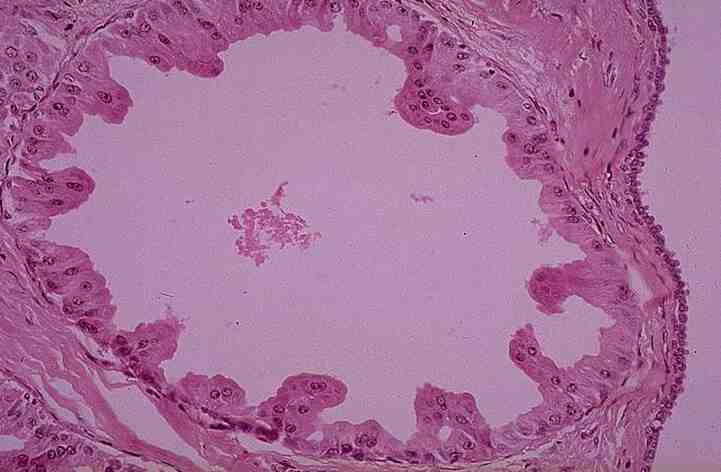
Breast: Fibrocystic changes

A
40 yr old woman noted a vague mass in each breast, associated with tenderness
premenstrually. Palpation
revealed ill-defined nodularity which was more marked in the outer left quadrant
of the breast. This
area was biopsied.
1.
What is the most likely clinical diagnosis?
Breast cancer, fibrocystic changes, fibroadenoma.
2.
Why was the UOQ chosen for the biopsy?
Most
common site for breast carcinoma (50%)
Important
to confirm or exclude
the diagnosis of breast carcinoma
3.
What
are the key histological features?
Cyst
formation
Double layer of lining cells
(cuboidal epithelium, myoepithelium, hyperplastic)
Atrophy of lining cells due to
compression
Apocrine metaplasia
Large,
polygonal cells
Eosinophilic,
granular cytoplasm
Small,
round, deeply chromatic nuclei
Apical
buds
Macrophages may be present in cysts
Fibrosis
of stroma
Adenosis
Increase number of acini per lobule
Gland lumen not distorted but enlarged
4.
What
are the important histological features that increase risk for malignancy?
Epithelial
hyperplasia or atypia
Sclerosing
adenosis
Small
duct papillomas
5.
What
is the relationship to
Menstrual
cycle:
Absolute
or relative excess of oestrogen
Exaggerated
response of breast tissue to hormonal stimulus leads to fibrocystic changes.
Oral
contraceptives
Supply
balance source of oestrogen and progesterone
Family
history of breast cancer?
Increased
risk of breast cancer
<< PREVIOUS INDEX NEXT SLIDE >>
Copyright � Joseph Ong 2003